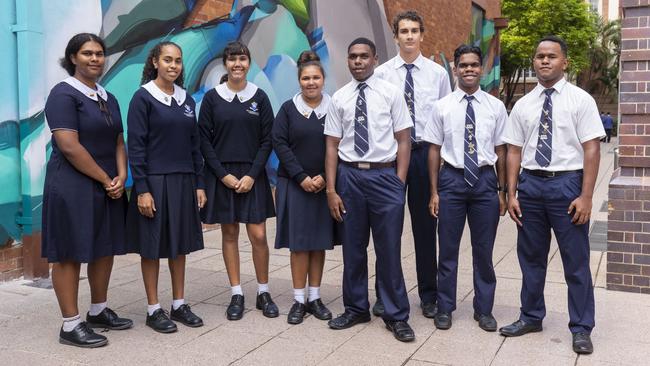Education the best platform for lifting Indigenous futures

As The Australian put it in an editorial a few years ago: “There is little hope of solutions if nobody will face squarely the nature and extent of the problems, and it’s important to bear witness to the human suffering involved. But it is also vital to spread news of achievement – especially incremental improvements of the kind likely to prove scalable and sustainable – lest we succumb to the paralysis of defeatism.”
All the goodwill in the world has done little to address the persistent and widespread disadvantage faced by many Indigenous children, and this lack of progress remains the biggest regret of almost every former prime minister in my lifetime. The latest report by Jacinta Nampijinpa Price, from the Centre for Independent Studies, reminds us, yet again, of the shocking outcomes for many Indigenous Australians, particularly in remote and very remote communities. And reminds us, yet again, how so little has changed in the 20 years I’ve been involved in this work, despite all the good intentions and platitudes.
According to that CIS report, more than a fifth of Indigenous people from remote and very remote areas complete schooling only to Year 9 or lower and only 1.4 per cent of Indigenous people from very remote communities have a bachelor’s degree or higher qualification.
For the past three years more than 40 per cent of AIEF’s scholarship students have come from remote and very remote communities and, in 2020, AIEF’s students from remote and very remote communities achieved an annual retention and Year 12 completion rate of 99 per cent, the highest since AIEF started in 2008, and despite the challenges thrown at students by Covid-19 last year. In addition, 15 per cent of AIEF alumni from very remote communities are studying or have graduated with tertiary qualifications, a figure 11 times higher than other Indigenous people in very remote communities and equal to the proportion of non-Indigenous people in very remote communities with a bachelor’s degree or higher qualification.
Coinciding with the Australian Productivity Commission recently concluding that despite massive spending to address Indigenous disadvantage, the government’s evidence of what works in the Indigenous portfolio — and why — is “thin”, KPMG recently conducted an independent expert evaluation of AIEF, the most rigorous and detailed evaluation of any Indigenous education program ever published in Australia. It drew on the substantial amount of data collected by AIEF during the past decade to measure performance and detail the outcomes and impact of AIEF’s programs for individual students, their families, schools and the wider community.
The KPMG report found that 93 per cent of all AIEF’s Year 12 graduates are productively engaged after they finish school, and 97 per cent of all AIEF’s university graduates are employed after they complete university.
In his first speech in parliament on Indigenous affairs as Prime Minister, Scott Morrison declared: “The Closing the Gap initiative seeks to promote action across a broad range of fronts. It must and will continue to. As Prime Minister, I intend to have a more specific focus. To seek to make an impact in just one area that I believe can achieve generational change. And that’s education.”
In this speech, the Prime Minister continued: “The Australian Indigenous Education Foundation, the Clontarf Foundation, and so many other programs are producing great outcomes and we need to invest in that success – helping Indigenous boys and girls choose the futures they aspire to.”
Helping Indigenous boys and girls choose the futures they aspire to is at the heart of AIEF’s mission, which has remained the same since we started. As Morrison said in his first Closing the Gap speech to parliament, we can achieve generational change through education.
We know this is true because we witness it every day.
Since AIEF started in 2008, we have supported more than 1000 Indigenous students from more than 400 communities across the nation. Yet it remains a challenge for AIEF to operate with uncertainty in funding when there is so much demand for more places from Indigenous families, who can see the growing ranks of AIEF alumni from their own communities achieving greatness across the nation. AIEF alumni are forging careers in a range of fields from teaching to policing, medicine and healthcare to law, business, tourism, hospitality, the arts, community services, engineering, trades, government, defence, sport and every other career imaginable.
With the new challenges from Covid, now more than ever, it is vital to ensure Indigenous children have the opportunity through education to decide their own futures and take their rightful place in society.
Andrew Penfold is the Executive Director of the Australian Indigenous Education Foundation.




One of the world’s leading authorities on achieving great outcomes gave us some advice when we were starting the Australian Indigenous Education Foundation in 2008: You must maintain unwavering faith that you can and will prevail in the end, regardless of the difficulties, and at the same time have the discipline to confront the most brutal facts of your reality, whatever they might be. Every AIEF team member ever hired gets a welcome gift of the Jim Collins book, Good to Great, the source of this perspicacious advice and the inspiration for AIEF’s indefatigable focus on outcomes.